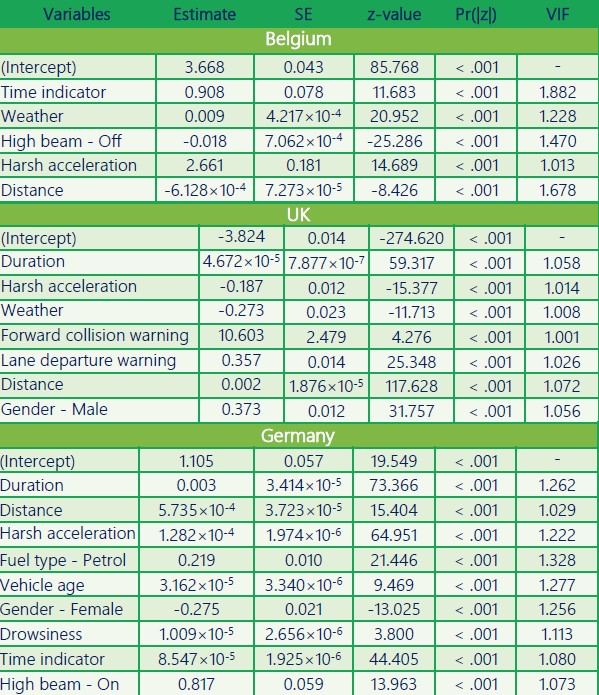
While mobility and safety of drivers are challenged by behavioural changes, the increasingly complex road environment has placed a higher demand on their adaptability. The ultimate goal of this paper was to identify the impact that the balance between task complexity and coping capacity had on crash risk. Towards that aim, an integrated model for understanding the effect of the inter-relationship of task complexity and coping capacity with risk was developed. A vast library of data from a naturalistic driving experiment was created in three countries (i.e. Belgium, UK and Germany) to investigate the most prominent driving behaviour indicators available, including speeding, headway, overtaking, duration, distance and harsh events. In order to fulfil the aforementioned objectives, exploratory analysis, such as Generalized Linear Models (GLMs) were developed and the most appropriate variables associated to the latent variable “task complexity” and “coping capacity” were estimated from the various indicators. Additionally, Structural Equation Models (SEMs) were used to explore how the model variables were inter-related, allowing for both direct and indirect relationships to be modelled. The analyses revealed that higher task complexity levels lead to higher coping capacity by drivers. Additionally, the effect of task complexity on risk was greater than the impact of coping capacity in Belgium and Germany, while mixed results were observed in the UK.
| ID | pc536 |
| Presentation | |
| Full Text | |
| Tags |







